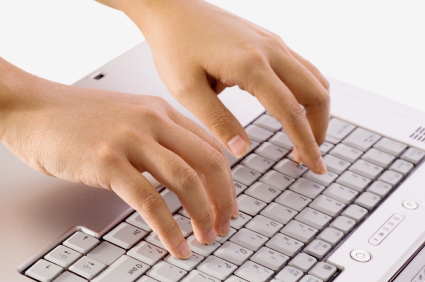The tell-tale bacteria
What germs populate the hands may be as unique as fingerprints.
Share this:
- Share via email (Opens in new window) Email
- Click to share on Facebook (Opens in new window) Facebook
- Click to share on X (Opens in new window) X
- Click to share on Pinterest (Opens in new window) Pinterest
- Click to share on Reddit (Opens in new window) Reddit
- Share to Google Classroom (Opens in new window) Google Classroom
- Click to print (Opens in new window) Print
Look closely at your hands — are they clean? It doesn’t matter how many times you wash them, your hands are still crawling with tiny organisms called microbes. (You may know microbes by their other names, such as “germs” or “bacteria.”) You can’t get away from them: Microbes are everywhere. But don’t worry — most microbes don’t harm you, and many actually help you stay alive.
Now, scientists say the microbes that live on our hands could be useful in a surprising way: fighting crime.
When police visit the scene of a crime, they often look for fingerprints to try to identify the culprit. They can also look for other things, like hair, to figure out who was there. But according to a recent study, investigators could even use microbes to help crack a case.
Every person has his or her own set of microbes that live on their hands, according to scientists at the University of Colorado at Boulder. That means that if you and your best friend were able to see and compare all the microbes that lived on both of your hands, your hands probably would look different. Some microbes would show up on your hand; others would live only on your friend’s hand. Your mix of different kinds of hand microbes is unique — much like your fingerprint.
The scientists in Colorado wanted to know whether this microbe mix could be used as a new kind of fingerprint — especially in a crime scene where fingerprints might be hard to find. The use of science to figure out what happened — such as studying fingerprints — is called forensics.
 |
|
In the study, the mix of germs on each person’s keyboard matched the unique mix living on that person’s hands.
|
| bluestocking/iStock |
Noah Fierer, one of the scientists, says microbe fingerprints are harder to hide. “You only need to smudge a fingerprint, but you can’t sterilize a surface just by wiping it off,” he told Science News.
Fierer and the team of scientists knew that when people work on a computer, the microbes from their hands end up on the keyboard. (Think about the microbes that are on your keyboard — especially if many different people use it!)
So to do their experiment, the scientists compared the bacteria on the hands of three people to the bacteria found on each person’s computer keyboard. For the study, the keyboards had been used only by the people who were being tested. The mix of microbes from each person’s hands matched the mix of microbes on that person’s keyboard. The scientists were easily able to tell the three people apart — just by looking at their keyboards.
But that experiment was only on three people, so the scientists knew they had to test their idea against a larger population. Their next step was to collect bacteria samples from the palms and computer mice of nine people. When they compared those samples to the known microbe mix from the hands of 270 other people, the team again found a match. Nine times out of nine, the bacteria patterns lined up — and it was again easy to tell who had been using which mice. (The information on the microbe mixes from 270 people already existed as part of the Human Skin Microbiome project. The microbiome is the population of microbes that live in and on the human body.)
So far, so good — but there are a lot more than 270 criminals out there. Other scientists wonder whether the microbe fingerprint can really be that useful. “Right now we really have no idea how unique a person’s skin microbiome is,” Elizabeth Grice told Science News. Grice is a geneticist at the National Human Genome Research Institute, part of the National Institutes of Health in Bethesda, Md.
Fierer agrees that scientists have a lot more work to do before the microbe fingerprint will be a useful tool.
In any case, it’s something to think about. Even if you don’t leave your fingerprints behind, your microbes may give you away.
Going Deeper:
Sanders, Laura. 2009. “Bacteria flourish in favorite ecosystems on the human body,” Science News, November 5. http://sciencenews.org/view/generic/id/49242/title/Bacteria_flourish_in_favorite_ecosystems_on_the_human_body
Sohn, Emily. 2008. “Cell phone tattlers,” Science News for Kids, March 12. http://sciencenewsforkids.org/articles/20080312/Note3.asp
Sohn, Emily. 2006. “Fingerprint evidence,” Science News for Kids, May 3. http://sciencenewsforkids.org/articles/20060503/Feature1.asp







